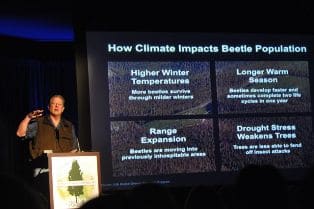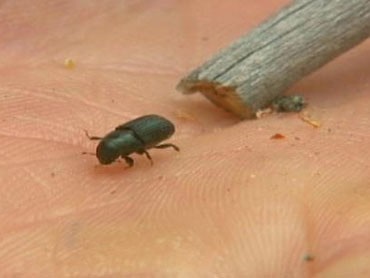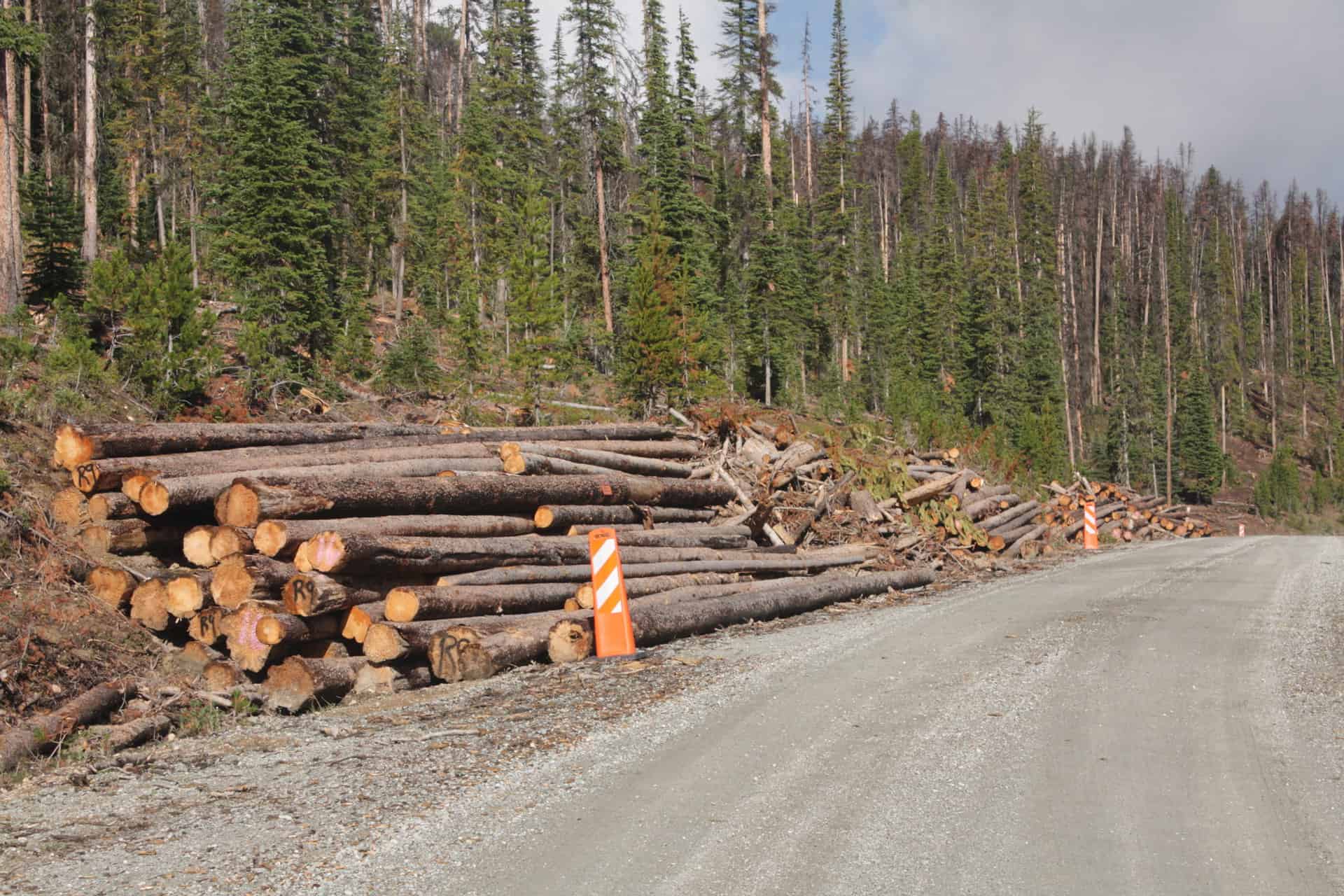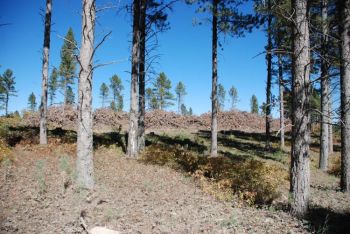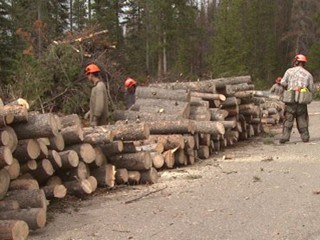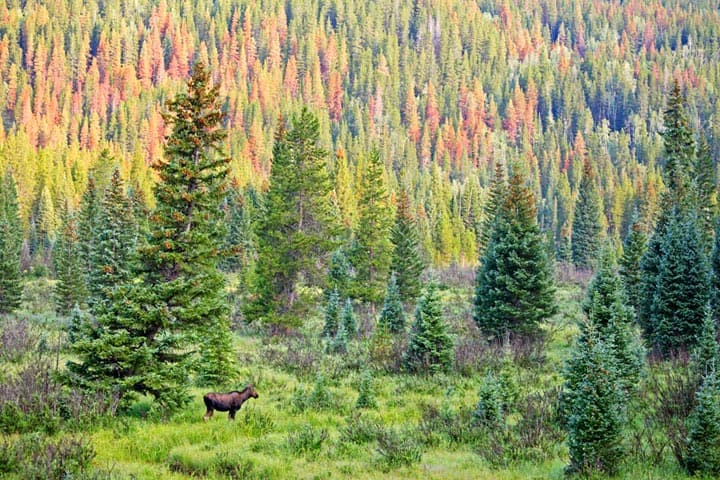
I know there are those of you out there who can never have enough beetle info (especially Colorado beetle info) so here you are. Here’s a link to the report itself.
Colorado: Beetle-kill a catalyst for dramatic forest changes
Posted on March 15, 2011 by Bob BerwynSubalpine fir will replace lodgepole pines as the dominant species in many areas affected by mountain pine beetles. Lodgepoles dominating regrowth in harvested beetle-kill stands; subalpine fir replacing lodgepole in untreated areas
By Bob Berwyn
SUMMIT COUNTY — One of the first solid studies on forest regeneration in beetle-stricken areas shows that there will be a dramatic change in the forest landscape. Subalpine fir will come to dominate huge areas previously covered by lodgepole pines, with as-yet uncertain consequences for the forest ecosystems.
Pine and aspen recruits are three times more abundant in harvested stands, while subalpine fir dominated in uncut stands. Based on their field measurements, Forest Service researchers said lodgepoles will once again become the dominant species in treated areas, with a more diverse mix of trees where there has been no logging.
Forest structure, including tree density, is projected to return to pre-outbreak levels in 80 to 120 years in both treated and untreated areas, with aspen becoming a significant part of the overstory for the next 50 years, before conifers once again dominate the canopy.
“It’s a system re-set,” said Forest Service researcher Chuck Rhoades, who worked in the field at the epicenter of the pine beetle epidemic around Gore Pass and in the forests near Walden and Granby to try and understand how the forests will heal. “There’s a lot of stuff going on underneath,” he said, explaining that additional studies will help pinpoint how different types of treatments may affect what comes next.
The four-page paper, “Signs of Recovery for Colorado Forests in the Wake of the Mountain Pine Beetle,” was published by Colorado State University’s Forest Restoration Institute, which partnered with the U.S. Forest Service’s Rocky Mountain Research Station to do the research.Rhoades said regrowth is strongest in areas where there were already some young trees sprouting beneath the lodgepole canopy. Some of the areas where subalpine fir are set supplant lodgepoles as the primary species will be quite different from the monoculture that has dominated the forest landscape for decades.
The firs are not susceptible to mountain pine beetles, but they can be killed easily by other insects and diseases. Rhoades said he would expect to see “more clumpiness,” with patches of different-aged trees rather than the common dog-hair stands of lodgepole.
From the report:
“The species (subalpine fir) is relatively short-lived and is susceptible to a number of insects and diseases, so it unlikely to form dense, evenpage stands, in spite of the high density of fir seedlings and saplings we measured. It is, however, reasonable to expect a shift from the uniform age and size conditions common in lodgepole pine-dominated forests to stands with more fir and greater size, age and overstory species diversity.”
But areas where the lodgepole was so thick that it prevented other species from taking hold — which includes big parts of the forests in Summit County — are more worrisome, he said. So far, there’s been little sign of new growth in those stands, whether they’ve been treated or not. Lodgepole may re-establish itself as the dominant species in those areas, but it may take a little longer.
The biggest change will be in the huge swaths of unharvested dead lodgepole stands, covering about 85 percent of the area affected by mountain pine beetles. Based on the field research subalpine fir will replace lodgepole pines as the dominant species in those areas, Rhoades said.
That holds true especially for the upper-elevation areas of the subalpine zone, where spruce and fir already had a foothold, said the Wilderness Society’s Grep Aplet.
“The real challenge is the lower elevation areas of Summit and Grand counties,” Aplet said. “Where mortality was less severe, the forests will recover quickly. In areas where it was most severe, the future is a little more uncertain,” he said.
There was no difference in seedling density colonizing clear cuts in live or in beetle-infested stands. But in harvested areas, lodgepole pines will once again become the dominant overstory species and grow back into stands similar to those that were attacked by pine beetles.
From the report:
“The implications of greater abundance of subalpine fir on High Country forests and communities remains uncertain. These findings represent the first stage in development of new forests following the beetle outbreak during a period of dramatic change that will have consequences for Colorado ecosystems and economies for many decades to come.”
